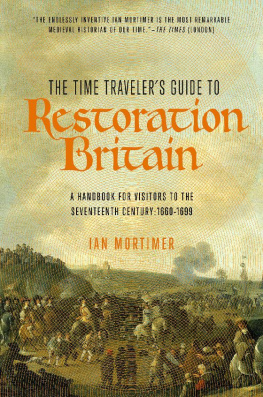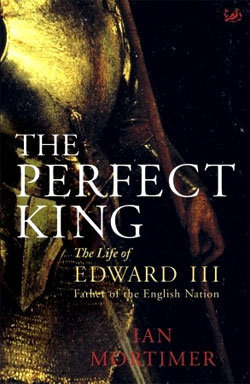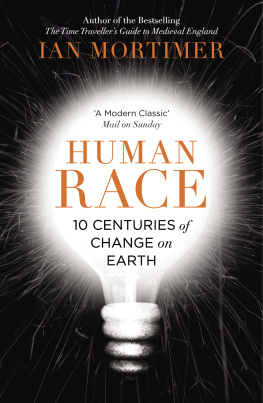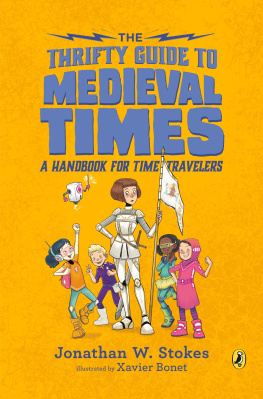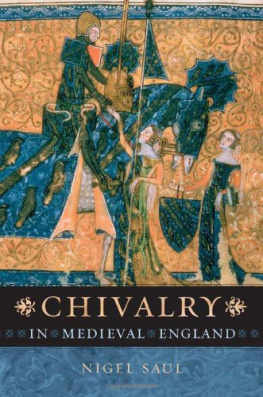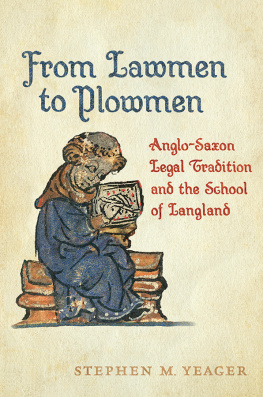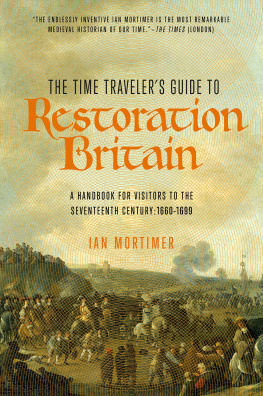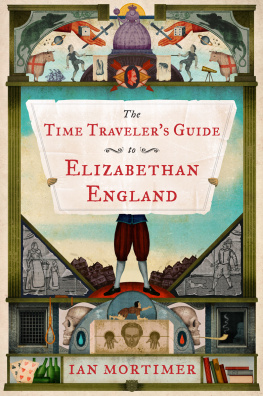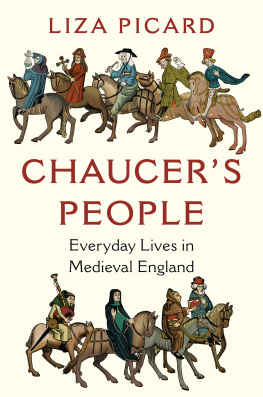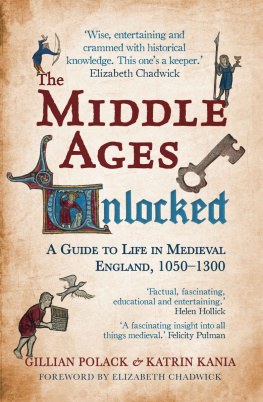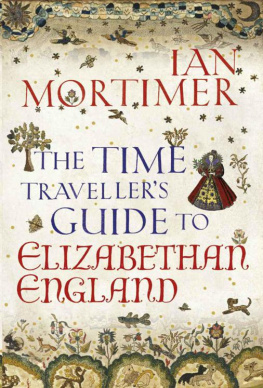Acknowledgments
I would like to thank my editors Will Sulkin and Jrg Hensgen, and all their colleagues at Random House who have helped to bring this idea to fruition, and my agent, Jim Gill, for sound advice. I am very grateful also to Kathryn Warner for giving me feedback on the first draft, and to those who accommodated me on various research trips, namely Zak Reddan and Mary Fawcett, Jay Hammond, Judy Mortimer, and Robert and Julie Mortimer. I would also like to record my gratitude for the helpful suggestions which Peter McAdie and Anne Wegner made during the course of editing this book.
By far my greatest debt is to my wife, Sophie. We first met in order to discuss this book in January 1995. I am deeply grateful to her not only for encouraging me to write it but also for subsequently marrying me. We now have three children: Alexander, Elizabeth, and Oliver. I am grateful to them too for teaching me things about life in all ages which one simply cannot learn from a book.
Moretonhampstead, Devon
March 9, 2008
Full Titles of Works Mentioned in the Notes
A few key texts have been of fundamental importance in writing this book. I feel obliged to single out books by Christopher Dyer, Barbara Harvey and Christopher Woolgar as particularly informative. I am also indebted to those older source-based books by G. G. Coulton, L. F. Salzman, Lucy Toulmin Smith and Henry T. Riley But over the last twenty or so years I have looked at a large number of secondary sources and manuscripts, and visited many museums and historical sites. To try to list them all now would be tedious as well as extremely difficult. It would also suggest I had given them all equal weight. For this reason, only those works cited in a short form in the notes are listed here.
J. Alexander and P. Binski (eds.), The Age of Chivalry: Art in Plantagenet England 1200-1400 (London: Royal Academy of Arts, 1987).
Anonymous, Sir Gawain and the Green Knight, 2nd ed., Brian Stone, trans. (Harmondsworth: Penguin Books, 1974). p. 64.
Richard Barber and Juliet Barker, Tournaments: Jousts, Chivalry and Pageants in the Middle Ages (Woodbridge: Boydell, 1989).
P. S. Barnwell and A. T. Adams, The House Within: Interpreting Medieval Houses in Kent (London: HMSO, 1994).
Patricia Basing, Trades and Crafts in Medieval Manuscripts (London: British Library, 1990).
Tania Bayard (ed.), A Medieval Home Companion (New York: Harper Perennial, 1991).
J. G Bellamy, The Coterel Gang: An Anatomy of a Band of Fourteenth-Century Criminals, English Historical Review 79, 313 (1964), pp. 698-717.
H. S. Bennett, Life on the English Manor: A Study of Peasant Conditions 1150-1400 (Cambridge: Cambridge University Press, 1967).
Maggie Black, Food and Cooking in Medieval Britain: History and Recipes (London: Historic Buildings and Monuments Commission for England, 1985).
J. L. Bolton, The Medieval English Economy 1150-1500 (London: Dent, 1980).
Jim Bradbury, The Medieval Archer (Woodbridge: Boydell, 1985; reprint 1998).
Henry Bradley (ed.), Dialogues in French and English by William Caxton: Adapted from the Fourteenth-Century Book of Dialogues in French and Flemish (London: Early English Text Society 1900).
F.W.D. Brie (ed.), The Brut, 2 vols. (London: Early English Text Society 1906-1908).
Edward Britton, The Community of the Vill (Toronto: Macmillan of Canada, 1977).
R. Allen Brown, H. M. Colvin, and A. J. Taylor, The History of the Kings Works: The Middle Ages 2 vols. (London: HMSO, 1963).
Calendar of Inquisitions Miscellaneous, vol. 4, 1377-1388 (London: HMSO, 1957).
Helen M. Cam, The Hundred and the Hundred Rolls: An Outline of Government in Medieval England, new ed. (London: Merlin Press, 1963).
Leonard Cantor (ed.), The English Medieval Landscape (London: Croom Helm, 1982).
Pierre Chaplais, Piers Gaveston: Edward IFs Adoptive Brother (Oxford: Clarendon Press, 1994).
Geoffrey Chaucer, The Canterbury Tales, David Wright, trans. (Oxford: Oxford University Press, 1985).
C. R. Cheney, Handbook of Dates for Students of English History (London: Offices of the Royal Historical Society, 1945; reprint 1991).
G. E. Cokayne, revised by V Gibbs, H. A. Doubleday D. Warrand, Lord Howard de Waiden, and Peter Hammond (eds.), The Complete Peerage of England, Scotland, Ireland, Great Britain and the United Kingdom Extant, Extinct or Dormant, 14 vols. (London: The St. Catherine Press, 1910-98).
G G. Coulton, Chaucer and His England, 2nd ed. (London: Methuen & Co., 1909).
,Medieval Panorama (Cambridge: Cambridge University Press, 1938).
G G. Coulton (ed.), Social Life in Britain from the Conquest to the Reformation (Cambridge: Cambridge University Press, 1918).
Charles Creighton, A History of Epidemics in Britain, 2nd ed., 2 vols. (London: Cass, 1965).
C. Willett Cunnington and Phillis Cunnington, The History of Underclothes (London: Michael Joseph, 1951).
C. Willett Cunnington, Phillis Cunnington, and Charles Beard, A Dictionary of English Costume 900-1900 (London: Adam and Charles Black, 1960).
Phillis Cunnington and Catherine Lucas, Occupational Costume in England from the Eleventh Century to 1914 (London: Adam and Charles Black, 1967; reprint 1968).
Matthew Davies and Ann Saunders, The History of the Merchant Taylors Company (Leeds: Maney, 2004).
Robert S. Dilley, The Customary Acre: An Indeterminate Measure, Agricultural History Review, 23 (1975), pp. 173-76.
Georges Duby (ed.), A History of Private Life, II: Revelations of the Medieval World, Arthur Goldhammer, trans. (London: Belknap, 1988).
Christopher Dyer, Everyday Life in Medieval England 2nd ed. (London: Hambledon Press, 2000).
, Standards of Living in the Later Middle Ages rev. ed. (Cambridge; Cambridge University Press, 1989).
Anthony Emery, Dartington Hall (Oxford: Oxford University Press, 1970).
Audrey M. Erskine (ed.), The Accounts of the Fabric of Exeter Cathedral, 1279-1353, vol. 24, 26, (Torquay: Devon and Cornwall Record Society 1981-83).
H.P.R. Finberg, Tavistock Abbey: A Study in the Social and Economic History of Devon (Cambridge: Cambridge University Press, 1951).
H.E.S. Fisher and A.R.J. Jurica (eds.), Documents in English Economic History: England from 1000 to 1760 (London: Bell & Hyman, 1984).
Frederick J. Furnivall (ed.), The Babees Book, Early English Text Society 32 (1868, reprint Woodbridge: Boydell & Brewer, 1997.
Jean Gimpel, Medieval Machine: The Industrial Revolution of the Middle Ages, 2nd ed. (London, Wildwood House, 1988).
Chris Given-Wilson, The Royal Household and the Kings Affinity: Service, Politics and Finance in England 1360-1413 (New Haven: Yale University Press, 1986).
Chris Given-Wilson (ed.), The Parliament Rolls of Medieval England, 1275-1504, CD ed. (Birmingham: Scholarly Digital Editions, 2005).
Anthony Goodman, John of Gaunt: The Exercise of Princely Power in Fourteenth-Century Europe (Harlow: Longman, 1992).
Robert S. Gottfried, The Black Death (London: Hale, 1983).
J. Patrick Greene, Medieval Monasteries (Leicester: Leicester University Press, 1992).
J. S. Hamilton, The Character of Edward II: The Letters of Edward of Caernarfon Reconsidered, in Gwilym Dodd and Anthony Musson (eds.), The Reign of Edward II: New Perspectives


